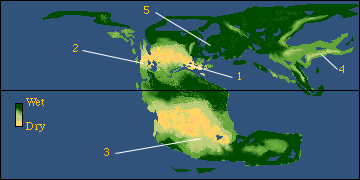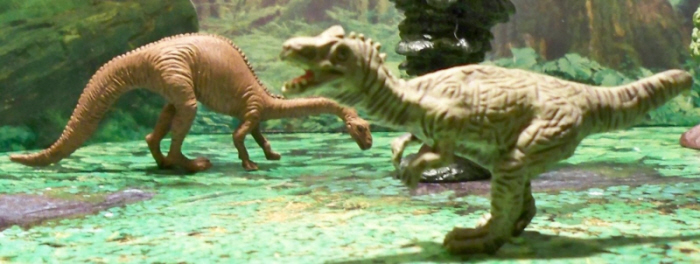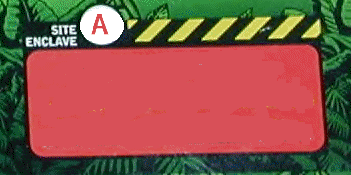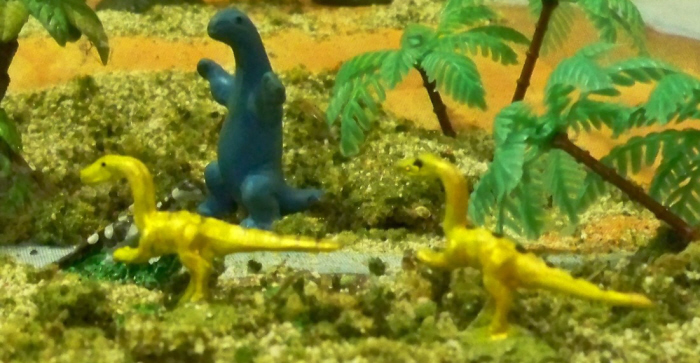EARLY JURASSIC

201 million years ago, about 50% of all terrestrial vertebrate families were wiped out at the end of the Triassic. Pangaea the world continent begins to break up. Plants exhibit a low diversity, dominated by primitive conifers. The new flora favored high browsing herbivores like the prosauropods. The first large theropods appear. The theories for the extinction include a possible meteor strike, but no conclusive evidence has been put forward. The Late Triassic witnessed a series of extinctions that marked the change from low browsing aeteosaurs and dicynodonts preyed on by archosaurs, to the high browsing prosauropods and large theropods. This has been used as an argument that dinosaurs out-competed the earlier forms. It is possible they were the lucky survivors of the extinction that allowed them to diversify and fill the vacant niches. The Late Triassic had several waves of extinctions. The final one at the Triassic–Jurassic boundary happened in less than 10,000 years and marks the boundary between the Triassic and Jurassic periods. There is some evidence for meteor strikes and volcanism but the cause is not proven. The climate changes with arid bands spreading through previously wet areas possibly caused by a change in the earth’s rotational tilt at least half of the species now known to have been living on Earth at that time went extinct. Ecological niches were cleared out, allowing the dinosaurs to assume the dominant roles. This event occured just before Pangaea started to break apart. The climate was warm and moister than during the Triassic. During the Early Jurassic a global flora spreads. Equatorial groups like cycadiods, cycads and primitive conifers, along with ferns, became more important components of the southern Gondwanan flora. Gingkoes and Czekanowskiales are more common in the north and the Araucaria (monkey puzzle) in the south. Dinosaurs dominate the large land vertebrates and mammals are the most important small vertebrates.
1) The Newark Supergroup, has prosauropod grade sauropodomorphs Ammosaurus and Anchisaurus and the coelophysoid Podokesaurus.
2) the Glen Canyon Group;The best known formations from North America are the Kayenta Formation and Navajo Sandstone. We have Dilophosaurus, small coelophysoid, prosauropods, armored dinosaurs and small ornithisians. Fossils for of smaller forms are much less common than tracks would indicate.
3) the Stormberg Group Africa;
4, The Lufeng Series of China has a crested theropod Sinosaurus, prosauropod Lufengosaurus, sauropods and armored dinosaurs.

5) The Lias of England. In Britian the Lower Lias and Oxford Clay give a range of scrappy and indeterminate theropods and ornithiscians with the best example of Scliediosaurus. Scelidosaurus is also found in the American Southwest.

6) Hanson formation Antartica sauropodomorphs and early tenaturan theropods..
7) Kota Formation India had a warm climate where the early sauropod
Barapasaurus is found. India was part of Gondwana durring the
Mezosoic.
The first large theropods show up Dilophosaurus, Megalosaurus and Crylophosaurus. Smaller therapods like Syntarsus similar to Coelophysis are still common. The end Triassic extinction saw the last placodonts and giant Shastosaurs, a new Early Jurassic marine dynasty of marine reptiles, consisting of new types of ichthyosaurs, plesiosauroids and pliosauroids, and fish-eating crocodles, quickly evolved and diversified.
Next to the Middle Jurassic

